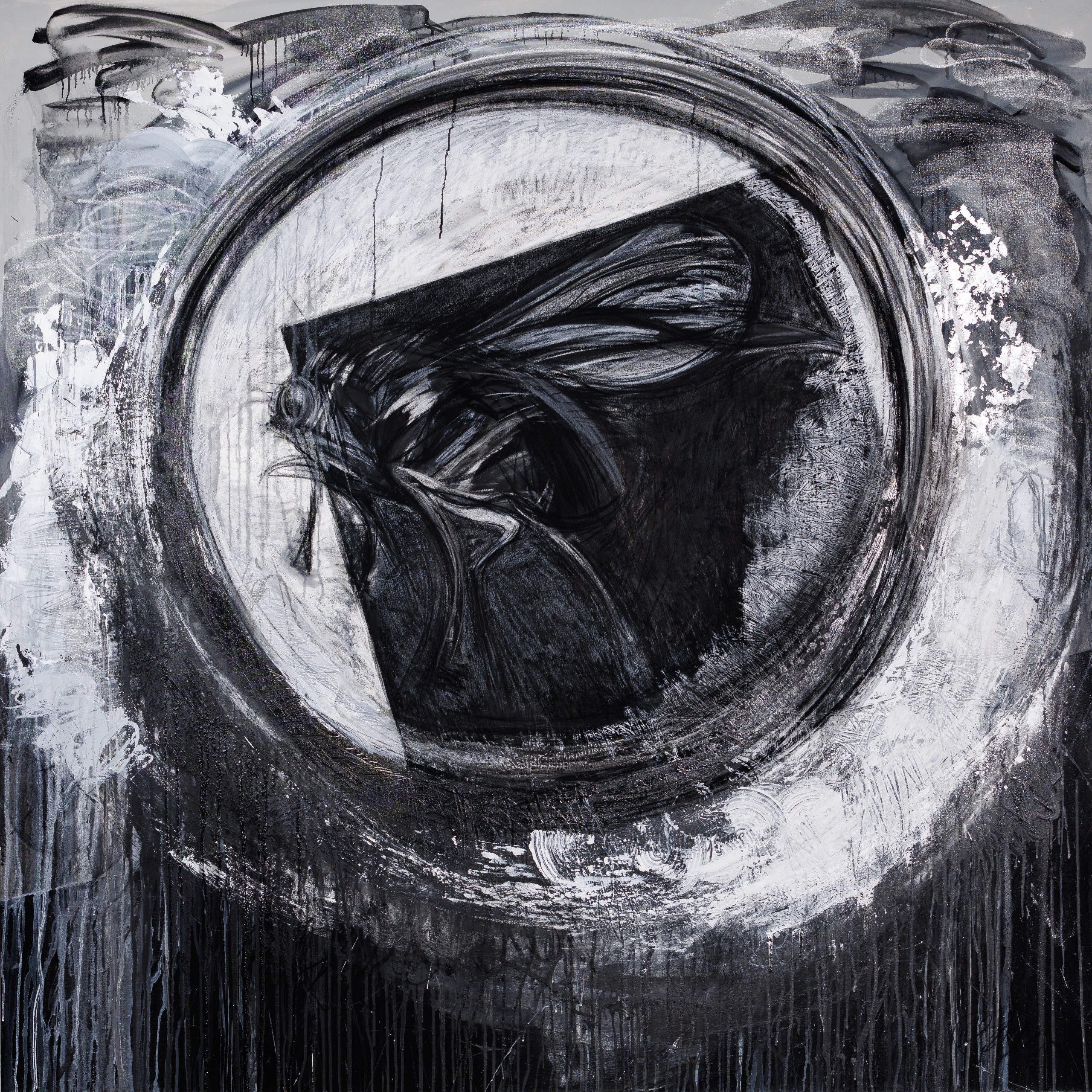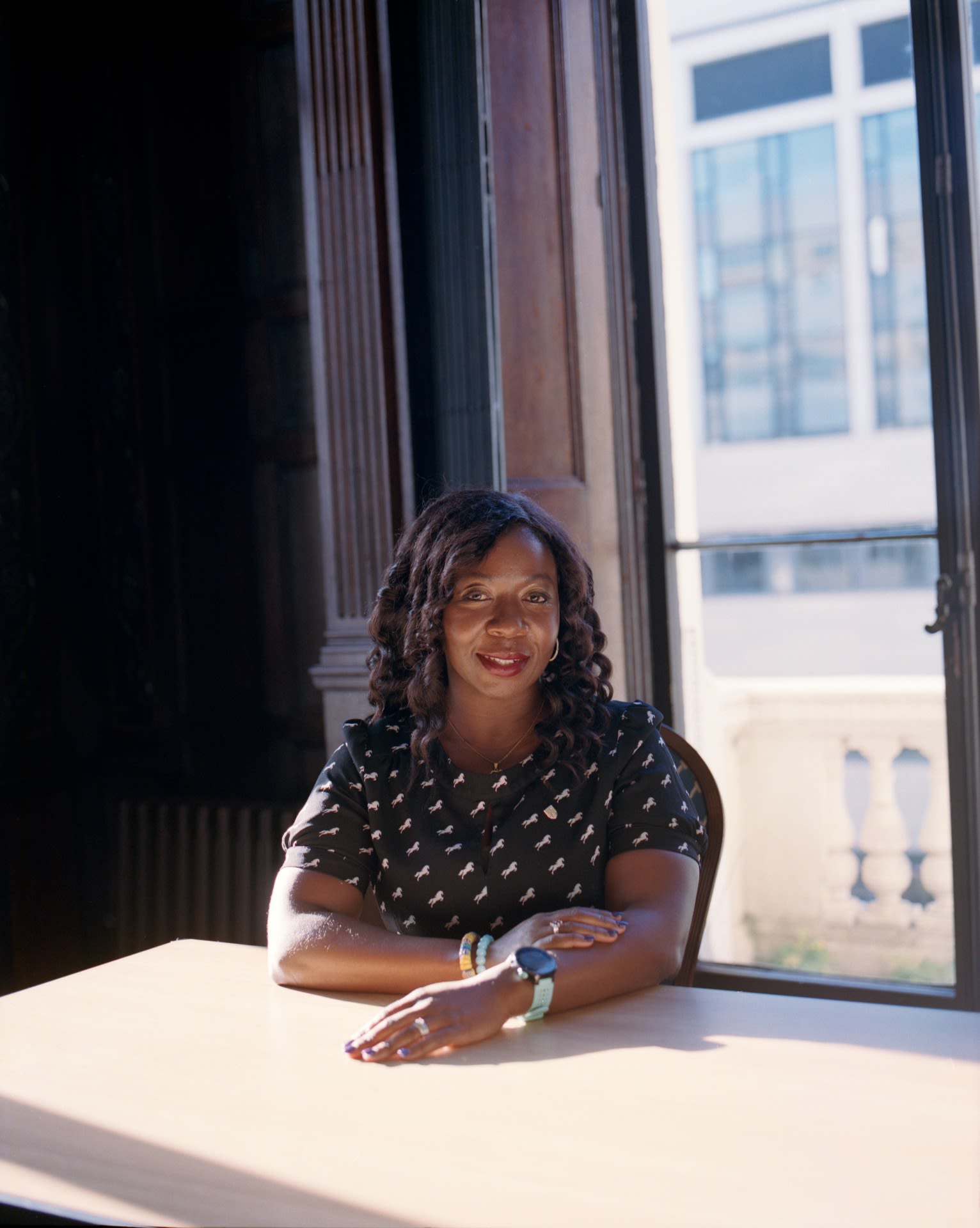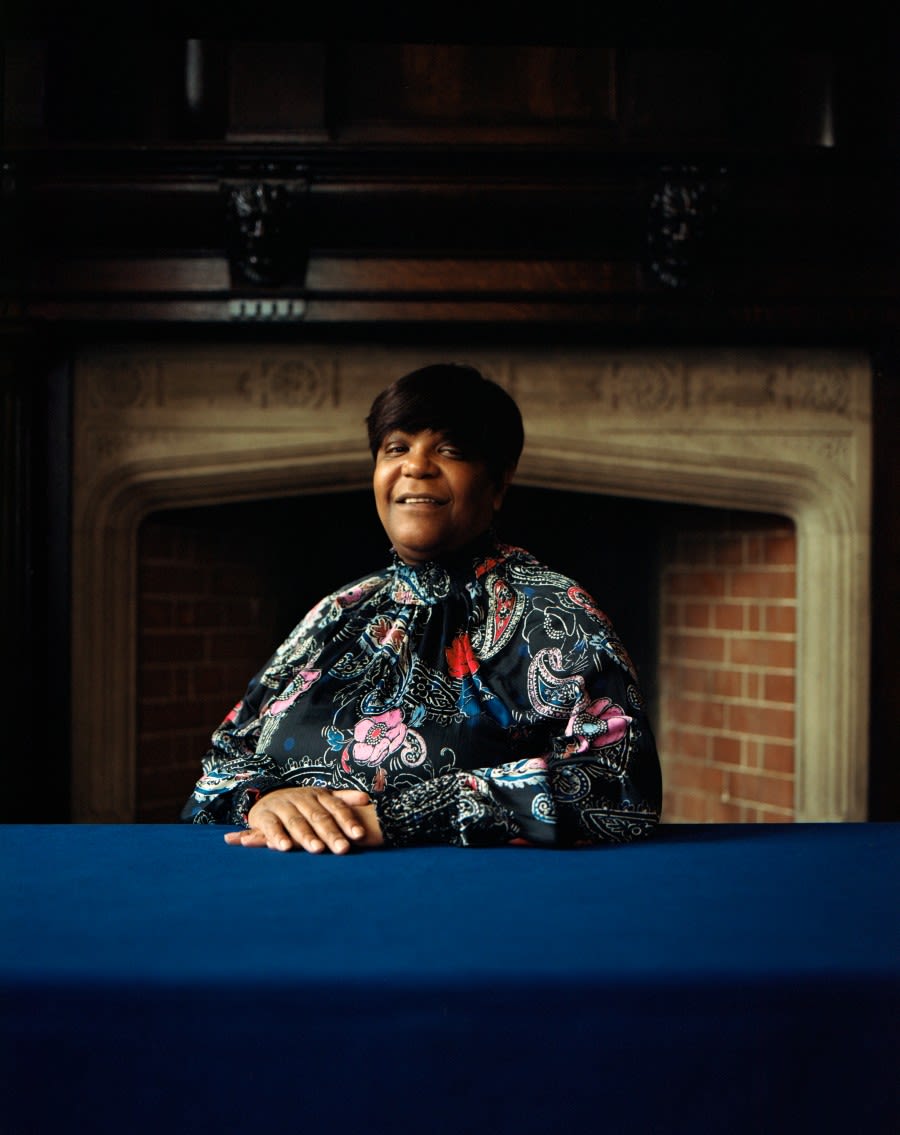Diversifying Imperial's art
Meet the artists behind Equality, Diversity and Inclusion Portrait Prize

Artworks commissioned as part of the Equality, Diversity and Inclusion Portrait Prize have become part of the College’s permanent art collection, aiming to help address a lack of diversity in the art displayed at Imperial.
The Equality, Diversity and Inclusion Portrait Prize awarded £2,000 to six Royal College of Art (RCA) students and alumni to create and display works representing the Imperial community. The prize had a particular focus on works that depict members of Imperial’s Black, Asian and minority ethnic (BAME) community by artists that also identify as BAME.
The works, which were first exhibited in the Blyth Gallery in January, are the result of a collaboration between Imperial and the RCA. The art will go on display in the College’s Main Entrance on Exhibition Road from 4 – 12 April before new locations are found for the works across Imperial’s campuses.
The prize is one of a number of initiatives being rolled out by the Imperial Artworks Group, which was commissioned by the President and Provost to consider how Imperial can better reflect its staff, students and alumni through its art.
Professor Sian Harding, Chair of the Artworks Group, said: “The Artworks Group was commissioned to ensure that the art we display on our campus walls properly reflects our community. Everyone should be able to see themselves represented in the art on our walls and in our public spaces. For too long that has not been the case.
“The Equality, Diversity and Inclusion Portrait Prize is one way that we are trying to address this imbalance. We are proud to display these striking portraits, which will enhance the College’s permanent art collection for years to come.
“It is important that we do not consider this an isolated project, but an ongoing effort to do better for our whole community. Our important work continues.”

‘Belonging’ by Emily Moore
Emily Moore, who graduated from the Royal College of Art with a Painting MA in 2020, has previously taken part in group exhibitions at London’s Saatchi Gallery, Lisson Gallery and White Cube. She says that the inspiration for her work for the EDI Portrait Prize came from a conversation she had with staff members at Imperial.
She said: “A person from Imperial College's diversity and inclusion group said to me that there was a title that had stuck in their mind, which was the title ‘Belonging’. I thought about a way to engage a piece of work from that perspective, just the language of, or the feelings and emotions of the words ‘to belong’. That was my starting point for this piece.”
Emily chose to avoid presenting a traditional portrait for the Prize and designed a work that heavily uses wool to create a dynamic, visually striking image.
She added: “There was the idea that within the space of Imperial that colour and something tactile, something that was inviting and engaging... that was something that people were really referencing and wanted to see in that space.
“I approached this piece from that perspective. First, from the idea that it belongs to everybody and then also that it is something that will engage people from a colour, textile, and materiality perspective.”

Emily Moore - ‘Belonging’
Emily Moore - ‘Belonging’

‘Fly in the landscape: Looking at the noise’ - Miya Jazmin-Browne
‘Fly in the landscape: Looking at the noise’ - Miya Jazmin-Browne
‘Fly in the landscape: Looking at the noise’ by Miya Jazmin-Browne
Miya Jazmin-Browne, who studies Painting at the RCA, uses painting and performance to play around with the idea of nothingness and intense representation.
I want to provoke the viewer and capture some of the overlapping elements between art and science.
Miya produced an art piece based on conversations with Dr Vincent, whose research involves looking at immunity in flies. This work means they spend a lot of time examining the insects under a microscope. Before commencing the portrait, Miya met with Dr Vincent in their lab to understand more about their work and what motivates them – and found many similarities between this and Miya’s own practice as an artist.
Miya said: “I want to provoke the viewer and capture some of these overlapping elements between art and science.”
"Everyone should be able to see themselves represented in the art on our walls and in our public spaces."
- Professor Sian Harding, Chair of the Imperial Artworks Group

‘Kailash’ and ‘Gabriella’ by Tami Soji-Akinyemi
Tami Soji-Akinyemi, born 1991, considers herself to be primarily a conceptual abstract painter, but she was interested in the idea of marking a legacy through portraiture in her works for the Prize.
As a Painting MA student at the Royal College of Art, Tami’s practice explores ‘leading’ images that hint towards visual clarity rather than revealing images all at once. She is a multidisciplinary artist who works between painting, printmaking and sculpture, often using processes derived from propaganda to explore the agency and dynamics of presenting the seen as unseen, and the unseen as suggested.
She found that the faces of Kailash Ramlaul, Research Assistant in Imperial’s Department of Infectious Disease, and Gabriella Gordon-Kerr, Equality, Diversity & Inclusion Advisor, allowed her to explore recurring themes in her work.
Although both sitters have different backgrounds and work/study in contrasting areas, connections and similarities appeared; from the importance of representation and uplifting of community, their self-realisations, problem-solving skills, and even the attachment to their necklaces.
This, Tami says, led her to present Kailash and Gabriella in the same environment, as if emerging from a fog of layered and obscured notes of their conversation, stories, and journeys with dignity and illumination.
With Gabriella, I was drawn to her being resourceful within her role in order to support others with training in leadership roles.
The paintings are oil on canvas and were created following a talking session and in-person sketching sessions with both sitters in RCA studios.
The swirling background of the works are designed to represent the energy of Kailash and Gabriella as change-making members of Imperial’s community, as well as in their wider lives.
Tami said: “Kailash talked about how his life and work and the importance of putting together sometimes blurry images to form a clearer picture of how things work with his research. This is something that I think about in my practice too - how method can transform the abstract into something more tangible.
“With Gabriella, I was drawn to her being resourceful within her role in order to support others with training in leadership roles - connecting the dots and giving confidence to others as well as boosting her own. Gabriella also has a gentleness and openness with her smile which was nice to showcase, as care and support is important within an educational institution.”

'Kailash' by Tami Soji-Akinyemi
'Kailash' by Tami Soji-Akinyemi

'Gabriella' by Tami Soji-Akinyemi
'Gabriella' by Tami Soji-Akinyemi


'Who should sit here?' - Sichan Wang
'Who should sit here?' - Sichan Wang
'Who should sit here?' by Sichan Wang
Sichan Wang, born in China, studies Photography at the Royal College of Art. Sichan is interested in playing with fiction, creating characters, and performing identities to reveal implicit political and cultural criticisms. In her recent work, she is attempting to explore the identity crisis at the intersection of sexism and racism.
Her project for Imperial's EDI Portrait Prize aims to represent the perceived image of Asian women living in the UK and their safety in society.
Sichan said: “I was inspired by my own personal experience as a woman, specifically an Asian woman, living in London. We are often seen as easy targets for crime and harassment, stereotyped as weak, docile and subjugated.”
In the image, Sichan used a rabbit to draw attention to these perceptions and stereotypes after she found it difficult to identify a sitter for the portrait.
She added: “A rabbit is a symbol of sexuality, but is also a vulnerable, seemingly weak and easily tamed animal – it represents an indirect way of animalising and sexualising women - I used this image to portray this kind of insecurity of Asian women living in the UK."
‘Sarah’ and 'Margaret' by Alexander Ikhide
Alexander Ikhide, born in 1993 in Lagos, Nigeria, is a multidisciplinary visual artist who lives and works in London. His artworks often involve collage, both analogue and digital, drawing, painting and photography, to interrogate issues of representation, identity, history, sexuality, gender and race. He is currently doing an MA in Photography at the Royal College of Art.
Alexander says that he uses photography as a means to highlight and document the lives of Black British people of the diaspora, and as a means to combat systemic erasure and negative misrepresentation that informs ingrained biases and stereotypes about Blackness and Black identity.
His work has often focused on Black male identity, particularly through queerness, but for this project, he photographed two Imperial women, Dr Sarah Essilfie-Quaye and Margaret Lawrence.
The way I approached shooting these subjects was very informal, very casual, in an intimate setting.
Sarah is an Equality, Diversity and Inclusion Research Fellow in the Faculty of Medicine and the Co-Chair of Imperial As One, while Margaret is Engagement Officer in the College’s Enterprise team.
Alexander said that he found Sarah and Margaret's roles were very important at Imperial, through their work with Black and minority ethnic students and other members of the College.
He added: “How I approached shooting both of these subjects was the same way I would usually approach shooting most of my portraits – very informal, very casual and always in an intimate setting.
"I managed to shoot both of them within the interior of Imperial College, to show and resonate with a sense of the history of the College.”

'Sarah' by Alexander Ikhide
'Sarah' by Alexander Ikhide

'Margaret' by Alexander Ikhide
'Margaret' by Alexander Ikhide
